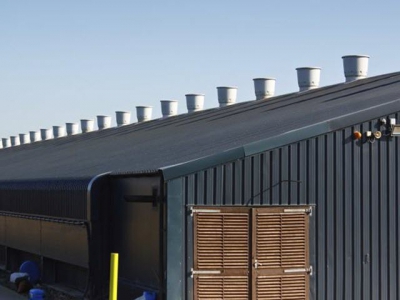Black UV light may improve poultry house air quality

Results may guide future research in improving air quality and biosecurity of poultry housing.
Gaseous emissions are an unwanted side effect of poultry production, and it is essential to mitigate ammonia and other gaseous emissions to increase industry sustainability, according to Dr. Jacek Koziel and colleagues from Iowa State University.
Koziel and his team in the Iowa State department of agricultural and biosystem engineering recently completed a research project funded by the U.S. Poultry & Egg Assn. (USPOULTRY) and the USPOULTRY Foundation that studied the mitigation of ammonia and odor emissions in poultry housing using black ultraviolet (UV) light.
USPOULTRY has posted the research report on its website.
In general, the components of gaseous emissions are composed of volatile organic compounds (VOCs), greenhouse gases (carbon dioxide, methane and nitric oxide), ammonia and hydrogen sulfide, Koziel said in the report.
VOC emissions cause odor in the local air quality, while emissions of odorous ammonia and hydrogen sulfide are important because of their quantity and toxicity, respectively, he added.
The main objective of the study was to develop and test a novel mitigation technology for ammonia and odor concentrations and barn emissions based on black UV light (a milder version of UV) and a special chemical coating for the ceilings, walls and exhaust fans of barns.
Koziel said laboratory-scale experiments involved testing the effects of the treatment time required to effectively reduce ammonia and odor in the fast-moving odorous air. Pilot-scale testing involved analyzing the effects of the treatment time and black UV light energy required to reduce ammonia and odor in the fast-moving odorous air effectively from a real poultry barn, he noted.
According to Koziel, the main results of this research project showed a reduction in gaseous emissions, including ammonia, in the laboratory study and the pilot-scale study.
In addition to the environmental effects, at high concentrations, these gases can be irritating to the mucous membranes of the respiratory tract and the conjunctivae and corneas of the eyes of birds. High levels also have a negative effect on overall livability, weight gain, feed conversion, condemnation rate at processing and the immune system of the birds, Koziel reported.
He said the results of this study can be used for future research involving perfecting this mitigation technology for: (1) air quality improvements, (2) improving poultry well-being and feed conversion efficiency, (3) improving biosecurity and (4) reducing greenhouse gas emissions.
Có thể bạn quan tâm
 Novel technology to target resistant pathogens in poultry
Novel technology to target resistant pathogens in poultry A new treatment to control the spread of antibiotic-resistant pathogens in poultry will be developed by researchers in the U.K. and China
 Post-hatch feed and broiler performance
Post-hatch feed and broiler performance The first seven days of life are increasingly important as broilers reach slaughter weight at an ever younger age.
 Broilers, turkey see fewer antimicrobials at hatch, in feed
Broilers, turkey see fewer antimicrobials at hatch, in feed The amount of antimicrobials added to the feed and water of broiler chickens and turkeys fell in the US from 2013 to 2017.